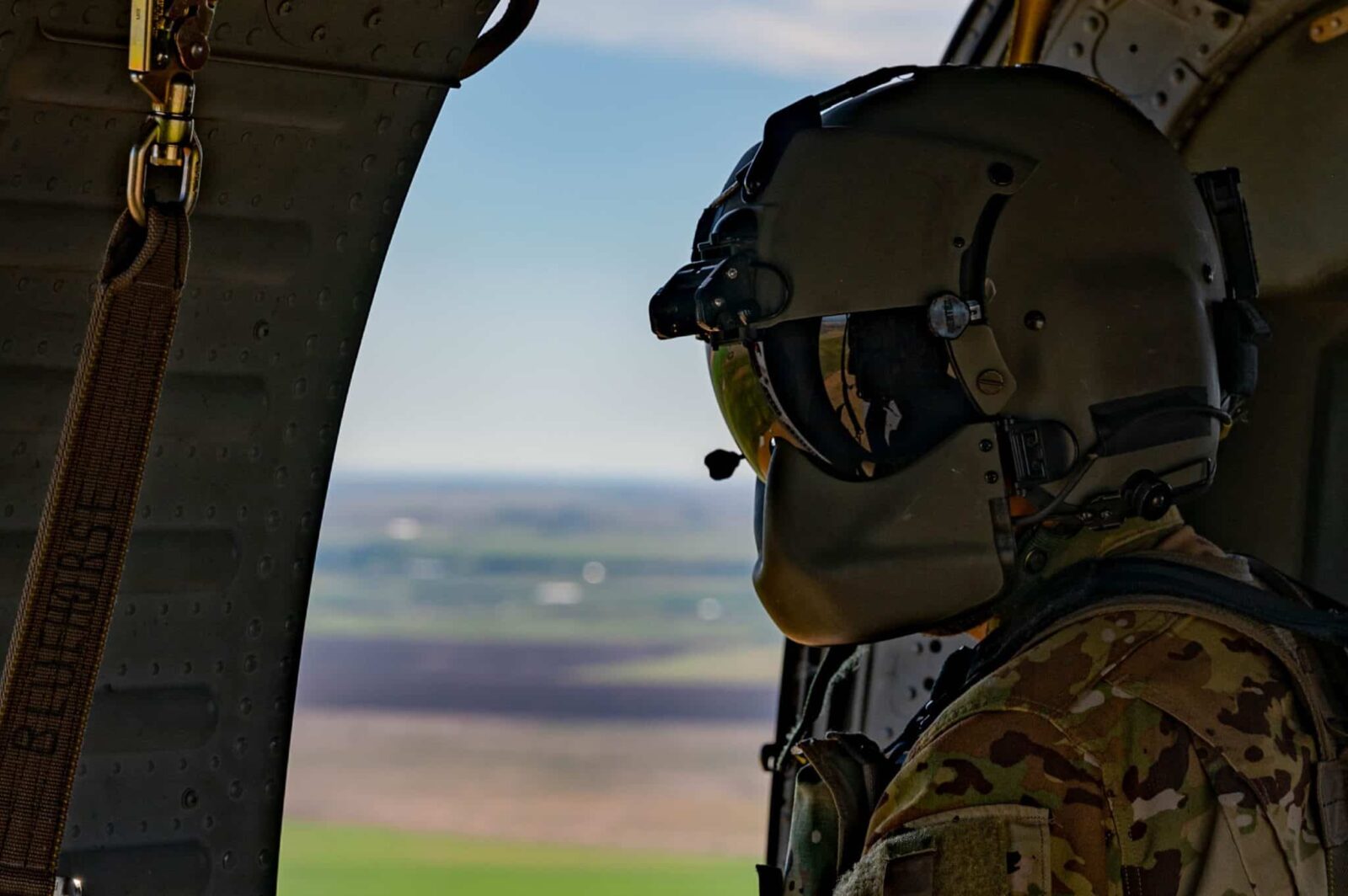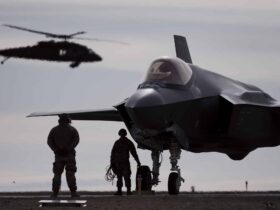by SGM Anthony R. Shaw, US Army
Military service, private-sector job opportunities, national pride, and the ability to serve represent four systems that affected the 2022 United States (U.S.) military recruiting environment. The U.S. Army experienced the second missed end strength goal within the current decade and became the only service that fell short of recruiting objectives in 2022.
While not exclusively related to one another, the four systems fostered conditions within the dynamic recruiting environment and contributed to the estimated 15,000 Soldier recruiting shortfall for 2022 (Department of the Army [DA], 2022). Private-sector job opportunities offered alternatives to military service due to wide availability and relatively low unemployment rates. The dynamic between private-sector and military service provided potential recruits with opportunities to select careers that better fit their wants and needs.
Public disapproval of lengthy military endeavors influences recruiting environments through loss of military support and shifting views of military service. Societal military support waned across the decades of conflict in Iraq and Afghanistan despite considerable national pride at the onset of the wars. Social media facilitates widespread communication; however, it enables misinformation and misperceptions of life in the Army. Regardless of societal support, the Army faces significant challenges with declining pools of eligible civilian candidates.
Obesity, education levels, and previous criminal backgrounds reduce candidate eligibility pools. The relationship between military recruiting efforts and the private-sector systems presents unique challenges that require a complete understanding of correlations in the recruiting environment. The Army must reevaluate recruiting approaches because of declining societal support, reduced recruit eligibility, competitive job markets, and ineffective marketing campaigns to meet established recruiting requirements and end-strength objectives.
Societal View of Military
Two generations (Gen) of U.S. citizens came of age during the two-decade-long U.S. involvement in foreign military conflicts. Born between 1981 and 2012, Millennials and Gen Z witnessed the progression of U.S. military involvement in foreign wars and experienced technological advances that promoted instant communication over the internet. As with any military conflict, societal support ebbed and flowed. A national study (Schaeffer, 2022) found that 27% of Americans considered the Afghanistan and Iraq wars a success, while nearly 60% viewed U.S. involvement as not worth the effort and generally a failure. Gen Z, a generation that does not know a peacetime nation, now represents the primary audience for Army recruiting efforts.
Characteristics
Gen Z is more culturally diverse than other generations and views the social, political, and economic systems through a more progressive lens than previous generations (Fong, 2020). This generation represents the youngest service-aged population that grew up as social media natives and primarily communicated through technology. Regular access to the internet at such an early age provided Gen Z with immediate access to information; however, it exposed them to potentially inaccurate information.
The wide use of social media as a public engagement platform in society, coupled with decades of war and misinformation, led to substantial misperceptions amongst Gen Z of what Army service looks like (DA, 2022). For example, an Association of the United States Army (AUSA) (2022) article reports that over 90% of respondents to a DA survey regarding Army familiarity stated they desired a career with an organization that produces positive impacts on society. Gen Z, as prospective Soldiers, wants their Army to align with their beliefs and perception of how the military interacts with society.
As a group, Gen Z exhibits more progressive ideologies, such as marijuana legality and women’s rights, and perhaps views Army service as an extension of conservative values. While the Army remains apolitical and integrates some progressive programs, such as women’s lactation centers, it does not excel with advertising such programs in recruiting approaches. The correlation between conservative values and military service amongst Gen Z may derive from highly patriotic families with a history of family members choosing military service (Pew Research Center, 2011). The amalgamation of Gen Z’s disapproval of U.S. war involvement, limited knowledge of Army life, and progressive views further reduce their propensity for military service.

Propensity to Serve
Current Army advertising campaigns do little to portray actual life as an Army Soldier. Instead, campaigns focus on available benefits such as enlistment bonuses or science, technology, engineering, and math careers, leaving eligible candidates guessing what life as a Soldier entails. Another factor affecting Gen Z candidates is the information posted on the Army’s official Instagram page. Most posts focus on combat-oriented skills, equipment, and tactics rather than offering in-depth interviews with currently serving Soldiers regarding day-to-day life and military occupational specialties (United States Army, n.d.). As a heavily influential social media platform, Instagram provides significant opportunities for the Army to reach service-aged Gen Z youth and dispel misperceptions of what life contains as a U.S. Army Soldier.
The combat-focused Instagram posts further complicate messaging for the Army. Given the more progressive worldview amongst Gen Z, perceptions of the tactical imagery posted to official U.S. Army Instagram accounts may include the potential of physical harm, psychological issues, or death. An annual propensity to serve study published by the Department of Defense (DoD) (2021) indicated that over 65% of respondents do not want to join the U.S. military for fear of physical injury, death, and psychological issues. Alternative approaches that portray duties performed by human resources personnel or those that work well behind the front lines during deployments serve to dispel misperceptions associated with death and injury. Knowledge gaps affect an individual’s desire for military service; however, interested parties must meet military service entrance requirements.
Candidate Eligibility
In general, military service mandates specific entrance requirements in the fields of education, physical makeup, and criminal history to ensure the quality of the American fighting forces. The Army is no different and finds itself amidst a historic recruiting shortfall with dwindling pools of eligible candidates (DA, 2022). Prospective Soldiers must pass initial screening criteria, which are tests that determine military occupation specialties, and meet U.S. Army-specified body fat composition standards for entrance into the Army. Gen Z represents the largest preponderance of service-aged youth; however, they also belong to a significant population of Americans that become immediately ineligible for service due to disqualifying factors (Spoehr, 2021).

Enlistment Criteria and Status
Army entrance criteria screen for undesirable candidates through various processes, including the armed services vocational aptitude battery, drug usage, background checks, and in-person physical screenings. Medical entrance standards immediately disqualify those who exceed or fall under established height and weight criteria (DA, n.d.a). As part of the in-person physical screening process, medical disqualifications for body composition correlate to systemic societal obesity issues and the present-day recruiting crisis. In contrast, Senior Army leadership officially recognized subpar physical fitness and education as major contributing factors to reduced enlistments and instituted pilot programs aimed at improving both areas to permit movement to basic training (DA, 2022). While waivers exist and permit entrance to candidates that are otherwise unqualified for service, the Army maintained consistent entrance standards despite a continuous increase in American youth ineligibility.
Ineligibility Factors
There is no denying that American society is more obese and less physically fit than previous generations. With more extensive body fat content and less physically fit, interested service-aged youth no longer meet minimum Army enlistment requirements. According to the U.S. National Center for Health Statistics [NCHS] (2021), the obesity rate among adolescents aged 2-19 is 19.7% and over 41% for adults aged 20 and over. The significant increase in obesity amongst service-aged adolescents and young adults significantly reduces recruiting efforts and the availability of potentially eligible candidates.
The DoD (2021) reported that individuals of Mexican and Black ethnicity indicated significantly higher levels of propensity to serve than others within Gen Z. The racial diversity and associated health factors of Gen Z further compounds the issue for the Army. A national demographic study concerning Gen Z (Parker & Igielnik, 2020) found that Hispanic and Black Americans aged 7-22 accounted for over 39% of the generation density. Although the propensity to serve remained high, roughly 50% of service-aged Gen Z Hispanic and Black Americans fell within the obese categories (NCHS, 2021).
The significant correlation between the Gen Z minority population and obesity prevalence further complicates Army recruiting efforts and necessitates policy changes. Despite a desire for quality over quantity, the Army must consider reviewing and updating current entrance standards regarding physical fitness requirements and body composition to account for increased rates of body fat composition amongst Gen Z populations. Additionally, any policy changes must consider and account for existing genetic body composition factors within ethnic minorities. Maintaining rigid entrance standards may drive otherwise eligible candidates toward private-sector jobs with competitive benefits packages.

Career Dynamics
The American job market once trailed behind the Army in terms of benefits available; however, it now offers similar, if not better, pay and comparable benefits packages. Gen Z individuals with a propensity to serve, but declared ineligible, now find themselves amidst a competitive private sector job market that facilitates personal selection of potential careers. The COVID-19-fueled recession created significant job shortages; however, economic recovery efforts created conditions that led to considerable job availability and low unemployment rates in the post-pandemic era (Edwards et al., 2022). Conversely, private sector careers may not offer the same sense of career security offered through military service.
Private Sector
Careers within the private sector job market afford varying levels of career security. Employers offer work through contracts that outline specific details of the job and at-will employment where an employer may terminate an employee at their discretion. Additionally, careers within the private-sector job market offer service-aged youth the freedom of choice for many aspects of civilian life. Freedom of choice allows an individual to choose the location, work type, and schedule. According to Hoffower (2022), Gen Z prioritizes positive working environments through work-life balance, flexible schedules, and competitive benefits.
The rapid onset of remote work, fueled by pandemic work conditions, facilitated a change in business operations that meets the demands of the Gen Z workforce. Additionally, careers within the private sector allow individuals to switch careers if dissatisfied. Simply resign and move on to the next job. While the private sector job market generally offers greater flexibility toward Gen Z demands, the downside is that most civilian careers fall into a category where employers may terminate employment at their discretion.
Private sector job availability continues to rise. A recent government labor study reports that over 11.4 million available jobs existed at the close of 2021, with continued expected growth (Adhikari & Mickle, 2022). The wide availability of job opportunities and employer demand facilitates a highly competitive job market that permits wage negotiation. Applicants also benefit from increased wages following employment. A study by Winck & Hoff (2022) found that the average hourly earnings increased by 5.2% among Americans, which is only .29 cents lower than pre-pandemic wages. The wage negotiation advantage and ample employment opportunities provide Gen Z service-aged individuals with the advantage of career selection, location, and potentially higher wages than offered by the Army.

U.S. Army
The Army promotes location and assignment choice; however, offerings become limited compared to opportunities available within the private sector job market. Occupational specialty and rank requirements further reduce positions and locations available to Soldiers. Presently, the Army offers recruits their first assignment of choice; however, it limits offerings to select occupational specialties at specific installations (Figgs, 2022).
Individuals employed in the private sector face potential pay uncertainty and unemployment. An employment termination, the state of the economy, and personal work performance contribute to private sector employment concerns. Careers with the Army shelter Soldiers from pay uncertainty and guarantees finances despite the economic state (DA, n.d.c). Guaranteed pay eases financial concerns associated with living paycheck to paycheck, offers financial security through stability, and enables financial growth. Army recruiting efforts must convey that service benefits and pay address private sector pay stability concerns, especially amidst rampant inflation.
This year, the U.S. experienced the highest consumer inflation rates increase since 1982 and drove price increases of consumer goods (U.S. Bureau of Labor Statistics, 2022). Increasing inflation rates and rising consumer prices require annual pay raises that offset the financial effects experienced by Soldiers. The Army benefits from annual pay and tiered service duration increases. The pay benefit becomes a key selling point for service-aged individuals considering the Army as a career option. The Army must consider revising marketing campaigns to reflect economic concerns facing service-aged individuals and heavily promote the consistency and stability of Soldier pay and benefits packages.
Ineffective Marketing
The Army markets military service through national marketing campaigns but misses opportunities within regional and local communities. A one size fits all approach does not appeal to an individual’s needs or wants within regional and local communities. The United States of America encompasses numerous demographics that each desire something different regarding career expectations. So, why, then, does the Army employ national marketing campaigns? The limited knowledge of the Army among service-aged individuals suggests a correlation to ineffective marketing that does not understand varying cultural and societal needs or wants for careers.

Recruit Needs and Wants
Service-aged individuals, especially Gen Z, value schedule flexibility, meaningful work, financial stability, and positive societal impacts (Hoffower, 2022). Careers with the Army satisfy the desires of potential Gen Z recruits. Regular and uninterrupted pay alleviates financial stability concerns. Unique opportunities with humanitarian relief efforts, involvement with community outreach programs, and multi-national training partnerships provide the means for meaningful work and positive impacts on society. According to Seemiller & Grace (2018), roughly 93% of Gen Z survey respondents indicated that an organization’s positive impact on society bears greater weight toward their decision for employment with a company.
As a Federal and State organization, the Army positively impacts American society, from infrastructure management and wildfire containment to medical technological advances. To this end, the Army is a highly competitive organization that offers abundant opportunities for interested service-aged individuals. Recruiting efforts in areas that experience hardships require targeted marketing in local areas to appeal to potential recruits’ sense of societal service.
Recruiting Campaigns
Effective recruiting campaigns must elevate an individual’s propensity for military service. Inclusive marketing within targeted communities clearly communicates that the Army understands community concerns and values potential recruits’ needs and wants. The Army Enterprise Marketing Office (AEMO) maintains responsibility for national advertising programs with a mission statement that suggests the office offers “best-in-class-marketing and advertising programs” (DA, n.d.b). If this is true, why did the Army fall short of the 2022 end-strength objective by 15,000 Soldiers?
The current AEMO-led recruiting campaign targets a national audience through a series of short videos strategically placed on social media and offers limited information about the benefits of Army service (DA, n.d.c). While the videos touch upon career benefits such as paid leave and home-buying assistance, they do not emphasize pay and financial stability. Furthermore, the videos do not target specific communities experiencing hardships due to natural disasters. Localized recruiting efforts in areas that experience wildfires articulate the Army’s commitment to supporting wildfire control efforts related to Gen Z’s positive societal impact desires.
Location-based marketing approaches provide the Army with specific regional and societal job desires and assist with refining recruiting approaches through marketing strategies to acquire potential recruit interest. A zip code-based marketing approach through social media offers the Army an opportunity to tailor recruiting campaigns to local demographics with higher propensities for military service (Pechmann, et al., 2020). Regardless of the approach taken, the Army must consider alternative recruiting approaches that represent the targeted audience’s desires, concerns, and societal views.
Conclusion
The U.S. Army must reevaluate recruiting approaches because of declining societal support, recruit ineligibility, competitive job markets, and ineffective marketing campaigns to meet established recruiting requirements and end-strength objectives. Recruiting efforts must consider all variables when appealing to service-aged individuals as potential recruits. Army leaders must tailor recruiting approaches to reflect societal concerns and include career demands for service-aged individuals. Revisions to policy must consider generational views and provide flexibility within body composition standards for potential recruits. Without substantial change, the Army recruiting approaches will continue to miss recruiting and end-strength requirements.

References
Adhikari, A., & Mickle, T. (2022, June 7). What is the unemployed people per job openings ratio? A 21-year case study into unemployment trends (6). Bureau of Labor Statistics. https://www.bls.gov/opub/btn/volume-11/what-is-the-unemployed-people-per-job-openings-ratio-a-21-year-case-study-into-unemployment-trends.htm
Association of the United States Army. (2022). Survey: Gen Z unaware of many benefits of service. https://www.ausa.org/news/survey-gen-z-unaware-many-benefits-service
Department of the Army. (2022). A call to service to overcome recruiting and retention challenges. https://api.army.mil/e2/c/downloads/2022/07/20/69722edb/sa-csa-memo-a-call-to-service-to-overcome-recruiting-and-retention-challenges.pdf
Department of the Army. (n.d.a). Eligibility and requirements. goarmy.com. https://www.goarmy.com/how-to-join/requirements.html
Department of the Army. (n.d.b). Army Enterprise Marketing Office. Army.mil. https://www.army.mil/aemo
Department of the Army. (n.d.c). U.S. Army march to service campaign. Army.mil. https://army.mil/standto/archive/2022/03/18/
Department of Defense. (2021). Fall 2021 Propensity update. The Joint Advertising, Market Research, and Studies Office. https://jamrs.defense.gov/Portals/20/Documents/YP51Fall2021PUBLICRELEASEPropensityUpdate.pdf
Edwards, R., Essien, L., & Levinstein, M. (2022, June 7). U.S. labor market shows improvement in 2021, but the COVID-19 pandemic continues to weigh on the economy. U.S. Bureau of Labor Statistics. https://www.bls.gov/opub/mlr/2022/article/us-labor-market-shows-improvement-in-2021-but-the-covid-19-pandemic-continues-to-weigh-on-the-economy.htm
Figgs, M. (2022). U.S. Army guarantees new enlistees duty station of choice. U.S. ARMY RECRUITING COMMAND. https://recruiting.army.mil/US-Army-Recruiting-News/Article/2946486/us-army-guarantees-new-enlistees-duty-station-of-choice/
Fong, J. (2020). Beware higher education: Cancel culture and Generation Z are here to stay. University Professional and Continuing Education Association. https://upcea.edu/beware-higher-education-cancel-culture-and-generation-z-are-here-to-stay/
Hoffower, H. (2022). Meet the typical Gen Z worker, who is quitting their job for a better one but probably regretting it later. Business Insider. https://www.businessinsider.com/what-gen-z-wants-workplace-expecations-salary-benefits-perks-2022-5#thats-because-theyre-disillusioned-with-the-current-working-environment-some-are-even-taking-to-social-media-to-reject-the-notion-of-work-2
National Center for Health Statistics. (2021). National health and nutrition examination survey 2017–March 2020 Pre-pandemic data files development of files and prevalence estimates for selected health outcomes (158). U.S. Department of Health and Human Services. https://stacks.cdc.gov/view/cdc/106273
Parker, K., & Igielnik, R. (2021). On the cusp of adulthood and facing an uncertain future: What we know about Gen Z so far. Pew Research Center. https://www.pewresearch.org/social-trends/2020/05/14/on-the-cusp-of-adulthood-and-facing-an-uncertain-future-what-we-know-about-gen-z-so-far-2/
Pechmann, C., Phillips, C., Calder, D., & Prochaska, J. J. (2020). Facebook Recruitment Using Zip Codes to Improve Diversity in Health Research: Longitudinal Observational Study. Journal of medical Internet research, 22(6), e17554. https://doi.org/10.2196/17554
Pew Research Center. (2011). The military-civilian gap: Fewer family connections. https://www.pewresearch.org/social-trends/2011/11/23/the-military-civilian-gap-fewer-family-connections/
Schaeffer, K. (2022). A year later, a look back at public opinion about the U.S. military exit from Afghanistan. Pew Research Center. https://www.pewresearch.org/fact-tank/2022/08/17/a-year-later-a-look-back-at-public-opinion-about-the-u-s-military-exit-from-afghanistan/
Seemiller, C., & Grace, M. (2018). Generation Z: A century in the making. Taylor & Francis Group.
Spoehr, T. (2021). Improving America’s long-term military recruiting outlook. The Heritage Foundation. https://www.heritage.org/defense/report/improving-americas-long-term-military-recruiting-outlook
U.S. Bureau of Labor Statistics. (2022). Consumer prices up 9.1 percent over the year ended June 2022, largest increase in 40 years. https://www.bls.gov/opub/ted/2022/consumer-prices-up-9-1-percent-over-the-year-ended-june-2022-largest-increase-in-40-years.htm
United States Army [@usarmy]. (n.d.). Posts [Instagram profile]. Instagram. Retrieved December 31, 2022, from https://www.instagram.com/usarmy/posts
Winck, B., & Hoff, M. (2022). Here’s where the US labor market stands halfway through 2022. Business Insider. https://www.businessinsider.com/hiring-trends-jobs-wage-growth-labor-market-unemployment-rate-outlook-2022-8
_________________________________
SGM Anthony R. Shaw serves as the BDE S3 Chief Engineer NCO for the 411th Engineer Brigade. He has held leadership positions as team leader, squad leader, platoon sergeant, operations sergeant, and operations Sergeant Major. As a recent graduate of the SGM-A, Shaw is dedicated to life-long learning and a staunch advocate for sharing the enlisted voice within the profession of arms. Shaw is a native of Columbus, Ohio, and enlisted in the Army Reserve in December 2004. He attended initial entry training as a Asphalt-Concrete Equipment Operator at Fort Jackson, South Carolina. He later reclassified his MOS as a Combat Engineer and Bridge Crewmember.
Shaw’s deployments include Operation Iraqi Freedom, New Dawn and Operation Anaconda. Shaw participated in the Reserve Foreign Soldier Exchange Program, where he served with British Royal Engineers and German Bundeswehr conducting joint wet gap crossing maneuvers. He was the first Non-Commissioned Officer in history to serve as a strategic planner on the USAR CAR/CG Commanders Action Group. Shaw later represented the Army Reserve on the 40th Chief of Staff of the Army transition team as an senior enlisted advisor.
As the Voice of the Veteran Community, The Havok Journal seeks to publish a variety of perspectives on a number of sensitive subjects. Unless specifically noted otherwise, nothing we publish is an official point of view of The Havok Journal or any part of the U.S. government.
© 2023 The Havok Journal
The Havok Journal welcomes re-posting of our original content as long as it is done in compliance with our Terms of Use.










Leave a Reply